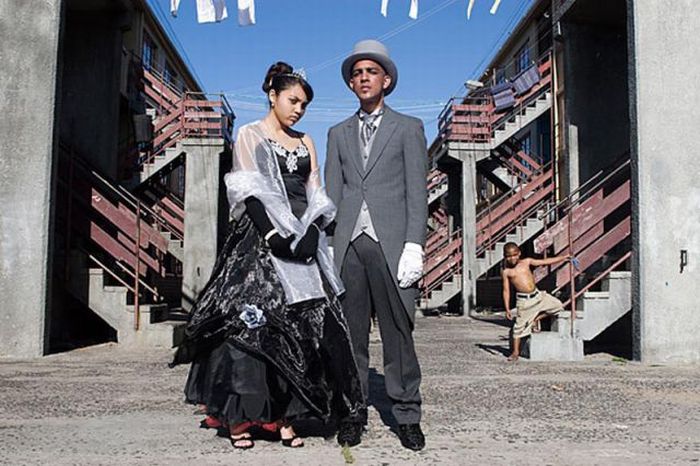|
|
Graduation Day Dress Up, South Africa
|
A UN Expert Group has created an operational definition of a slum as an area that combines to various extents the following characteristics: inadequate access to safe water; inadequate access to sanitation and other infrastructure; poor structural quality of housing; overcrowding; and insecure residential status. A more complete definition of these can be found in the 2003 UN report titled "Slums of the World: The face of urban poverty in the new millennium?". The report also lists various attributes and names that are given by individual countries which are somewhat different than these UN characteristics of a slum.
Low socioeconomic status of its residents is another common characteristic given for a slum.
In many slums, especially in poor countries, many live in very narrow alleys that do not allow vehicles (like ambulances and fire trucks) to pass. The lack of services such as routine garbage collection allows rubbish to accumulate in huge quantities. The lack of infrastructure is caused by the informal nature of settlement and no planning for the poor by government officials. Additionally, informal settlements often face the brunt of natural and man-made disasters, such as landslides, as well as earthquakes and tropical storms. Fires are often a serious problem.
Many slum dwellers employ themselves in the informal economy. This can include street vending, drug dealing, domestic work, and prostitution. In some slums people even recycle trash of different kinds (from household garbage to electronics) for a living - selling either the odd usable goods or stripping broken goods for parts or raw materials.
|
|









